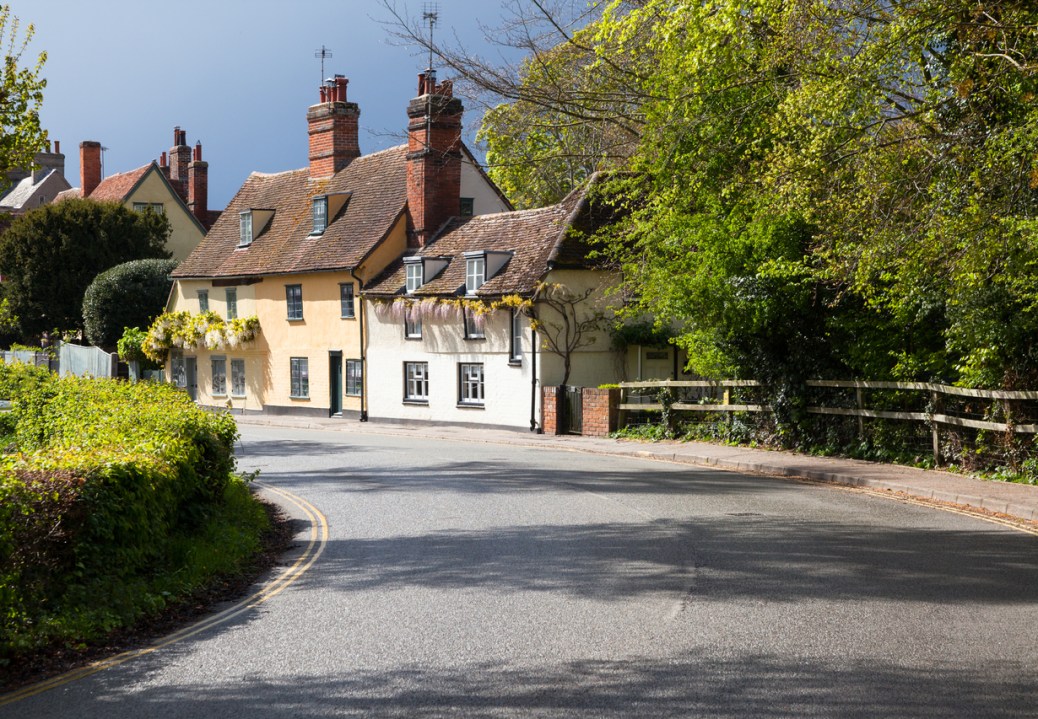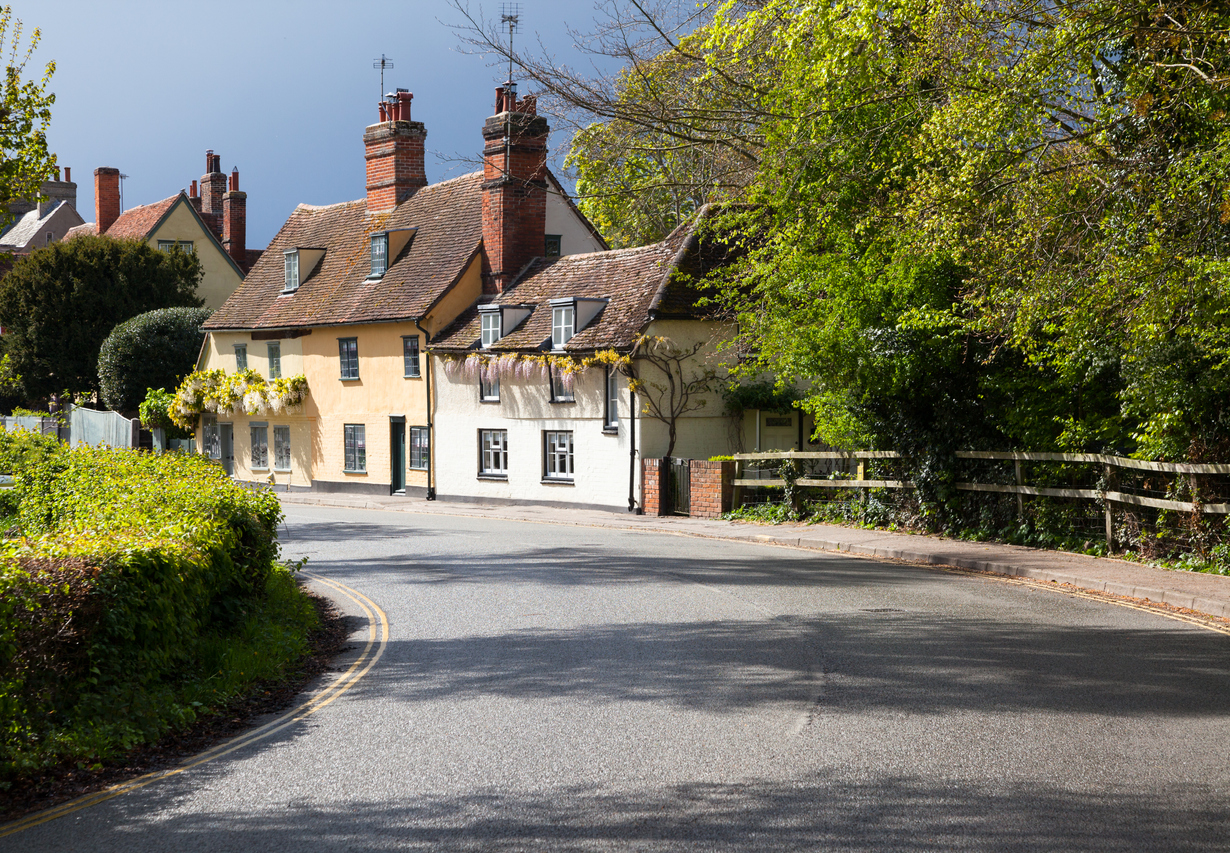I’m hiking along a footpath through glorious English countryside, across lush green meadows framed by ancient woodland. I’ve hardly seen a soul today, just a few solitary dogwalkers. I’ve been walking all day and my legs are aching, but I can’t recall the last time I felt so contented, so alive. Welcome to the Essex Way, an epic walking trail that runs right across this rugged county, from Epping, on the edge of London, to Harwich, on the North Sea.
I first walked the Essex Way, 81 miles from end to end, a few years ago. Like a lot of weekend hikers, I’d done a fair bit of walking in National Parks like the Lake District and the Peak District. What makes the Essex Way so different is that it runs through landscape which most folk dismiss as bland commuter belt. Traversing it on foot, you see an entirely different side of it. You’re rarely more than a few miles away from urban sprawl, and yet you hardly know it. As Werner Herzog said, ‘the world reveals itself to those who walk.’
The path zigzags across open countryside, through sleepy villages and deserted fields, sidestepping the drab dormitory towns and their dreary drive-thru detritus. There’s hardly any road walking. Almost all of it is car free. Although the route takes you through some of the wildest parts of Essex, it’s fairly accessible by public transport. The trail begins outside Epping tube station and ends around the corner from Harwich Town railway station. At most points inbetween, you’re within striking distance of a station.
The first time I walked the Essex Way I did the whole thing in one go, staying in Premier Inns along the way (there are plenty of posher places to stay, but I was on a budget). It took me six days. If you’re really fit – fitter than I am – I reckon you could do the whole thing in four days. However, there’s such a lot to see that it seems a shame to rush straight through it. Ideally, I’d recommend a full week. That should give you plenty of time to stop off at the numerous historic sites and country pubs you’ll pass en route.
Doing it as one uninterrupted journey feels like an adventure, a great escape from the working week, but if you don’t have the time (or stamina) it’s easy to do it as a string of day trips. This is where the railway really comes into its own. Rather than leaving your car at the starting point and having to retrace your steps to retrieve it, you can access either end of each day trip by train. Rather than having to plan ahead, you can make it up as you go along.
I’d love to walk the whole thing again in one go, but this time around I only had a few days to spare, so I opted to walk the last 20 miles in one day, from Dedham to Harwich, with an overnight stay in a nice hotel at either end. And so last week I boarded an empty off-peak train from London Liverpool Street to Manningtree, on a reverse commute to my favourite walking trail.
Doing it as one uninterrupted journey feels like an adventure
It’s only an hour to Manningtree, and the Essex Way runs past the station. From here it’s a short walk to Flatford, the iconic, bucolic site of some of John Constable’s most famous paintings, above all The Hay Wain. Two hundred years since he painted it, this quintessential English vista remains virtually unchanged. The site is run by the National Trust, who’ve done a fine job of preserving it. There’s a quaint café and a modest, informative museum. After a quick cuppa, I headed on to Dedham, along the meandering River Stour. As a boy, Constable walked this way to school every day. As a young man, he painted this verdant flood plain countless times. As I retraced his footsteps the heavens opened, which was fitting. He loved painting stormy skies.
The Sun Inn in Dedham is a great place for lunch, but by the time I got there I was drenched, so I headed straight on to Milsoms, a smart but cosy country house hotel, about a mile west of Dedham. The Essex Way runs right up to the front door. Milsoms is a family firm with four hotels, two of them in Dedham (the Talbooth is the fancier of the two, Milsoms is more informal). They also own The Pier, a harbourside hotel in Harwich, at the end of the Essex Way. I’d arranged to walk between the two hotels and have dinner, bed and breakfast in each place. I feasted on Dedham Vale rump steak, washed down with a pint of Adnams, then fell straight into my soft warm bed.
When I set off the next morning, full of black pudding and hash browns, the sky was dark and I thought I might get soaked again, but as I left Dedham the sun came out. It was going to be a good day. I followed the winding river to Manningtree, a bustling little town with lots of quirky independent shops, and on to Mistley, famous for its swans (attracted by the maltings from the brewery, apparently). I passed the Mistley Thorn Inn, where Witchfinder General Matthew Hopkins used to moonlight as a pub landlord, when he wasn’t busy finding witches. Here the River Stour opens out into a wide, windswept estuary, a paradise for wading birds, and birdwatchers.
From Mistley the route weaves inland, away from the River Stour, through forest and across farmland to the North Sea coast. The path runs along the seawall, with marshland on either side. You can see Felixstowe in the distance, a cluster of cranes on the horizon. Turn the corner and you’re in Dovercourt, with its brightly painted beach huts lined up along the prom.
A few miles on is Harwich, journey’s end. Most travellers head straight for the modern ferry terminal, Harwich International. They don’t know what they’re missing. The antique old town is full of history, including lots of stuff to do with The Mayflower, which was built here and sailed from here. My favourite spot is the beautiful Electric Palace Cinema, one of the oldest cinemas in the country, established in 1911 and still going strong today.
I checked into The Pier, an old railway hotel built for passengers embarking on steamships to the Continent. There were vintage posters in the stairwell. There was a lightship moored outside. I wolfed down my fish and chips and raspberry and lemon sorbet and watched the lights of Felixstowe, winking in the dusk across the bay. I shuffled upstairs and into bed and retraced today’s route in my mind’s eye. I’d only got as far as Mistley before I fell asleep.
I woke to the sound of seagulls. I was in no hurry to go home. I loitered over my haddock and poached eggs and watched a huge car ferry glide past the window, bound for the Hook of Holland. On the train back to Manningtree, I pressed my nose against the glass, looking out for landmarks from my trek. I spotted the ornate twin towers of Mistley, built by the great British architect Robert Adam, for a church long since demolished. I saw the sunlight glinting on the water. I saw a man hiking towards Harwich, along the footpath I’d walked the day before. An hour later I was back in London, lost in a sea of commuters, and the Essex Way seemed a world away.







Comments